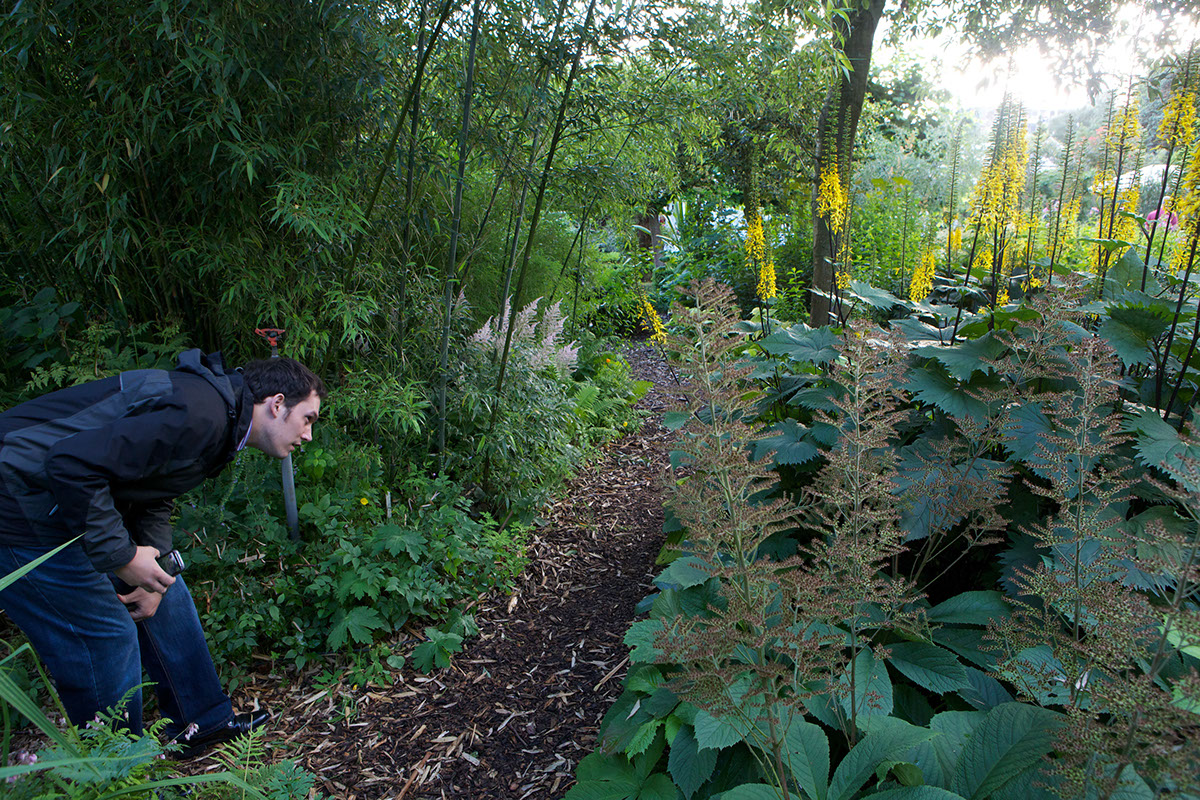
The Institute of Dirty Horticulture (2012) Graduation show of the Dirty Art Department, Sandberg Instituut, Amsterdam.
Curated by Victoria Anastasyadis, Sanne Oorthuizen, Jet Vermaning.
ATCG - All Tigers Can Growl, Lyske Gais, 2012 © Dirty Art Dpt, Sandberg Institute - photo: Ernst van Deursen
INSTALLATION
“Red. Green. Blue. Black. Green. ….” From behind the leaves, voices repeatedly whisper, shout and chatter four colours in different sequences. The title refers to Adenine, Thymine, Cytosine and Guanine, the four bases in DNA, and their commonly used mnemonic All Tigers Can Growl.
The colours lay bare a structure invisible to the eye. Since DNA technology has replaced morphology as a means for the classification of species, the categorization of plants has changed. For the botanical garden this resulted in the renaming and replacing of a number of plants and a shifted focus to specimens in experimental biology labs rather than concentrating on the actual plants.
Through a scientific project called Kingdoms of Life Being Barcoded, all DNA codes are being collected, identified and visualised as colour based bar codes. In her sound installation and book, Lyske Gais announces all fifteen hundred Dutch plant families by stating their name and colour code. The list of plants derives from Heukels’ Flora van Nederland, the most important morphology based textbook on Dutch flora.
Lyske Gais’ conceptual approach changes our perception of the botanical garden. The tension between nature and science, between chaos and order, between shape and structure is reflected in the cacophony of rhythmic speech. Her audio installation places a whole new garden on top of the one already there. With a background in architectural design, Lyske Gais often reflects on (invisible) structures in our surroundings, whether biological, sociological or architectural.

Book accompanying the project, in here the DNA sequences are written out per plant.
ATCG - All Tigers Can Growl, Lyske Gais, 2012 © Dirty Art Dpt, Sandberg Institute - photo: Ernst van Deursen
graphic design book in collaboration with Renata Alvares
ATCG - All Tigers Can Growl, Lyske Gais, 2012 © Dirty Art Dpt, Sandberg Institute - photo: Ernst van Deursen
graphic design book in collaboration with Renata Alvares
BOOK
ATCG
All Tigers Can Growl
Until now, biological specimens were identified using morphological features like shape, size and color. The arrival of DNA research changed this identification method and the way we order plants. It also made a database possible that can identify every biological specie on earth.
This book reduces the description of plants to four letters. How will this change the way we look at plants?
The plants and their order are taken from: Heukels’ Flora van Nederland, this is thé book about the Dutch flora and describes the approximate 2000 species in Holland.
Freek T. Bakker PhD: Scientific Advise
Renata Alvares: Graphic Design
James Mostert: Programming
many thanks to Lot, Bea and Sophie for being the data team
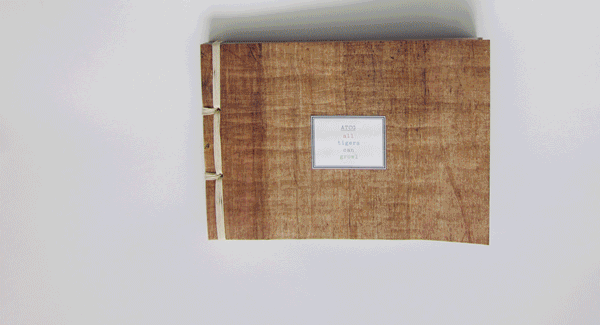
Book accompanying the project, in here the DNA sequences are written out per plant.
ATCG - All Tigers Can Growl, Lyske Gais, 2012 © Dirty Art Dpt, Sandberg Institute - gif: Renata Alvares
graphic design book in collaboration with Renata Alvares

Every section in the book starts with an overview page where all the DNA codes of the plants in this section are represented by the four colours.
ATCG - All Tigers Can Growl, Lyske Gais, 2012 © Dirty Art Dpt, Sandberg Institute - photo: Ernst van Deursen
PUBLICATION
A publication was made to go along with our graduation show. For this publication I have send postcards to the VU botanical garden, the place of our exhibition. For my research I visited a series of botanical gardens in the Netherlands, whilst at these gardens I wrote a message to the garden in Amsterdam.

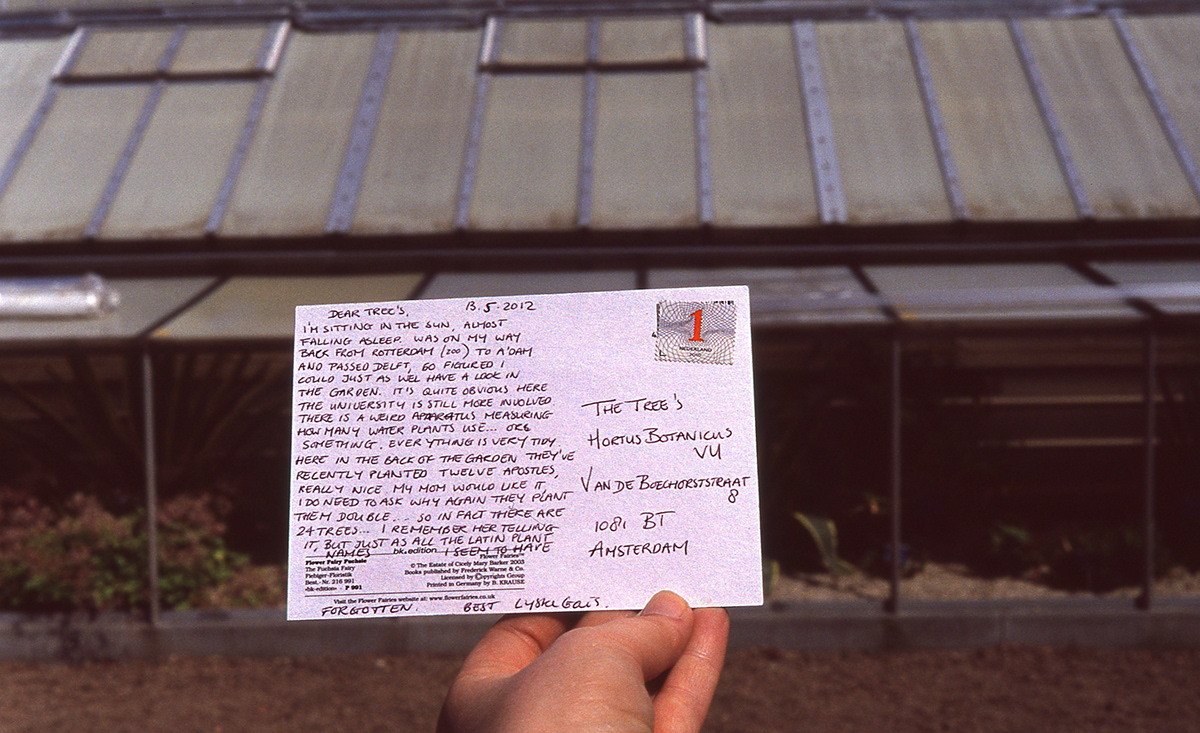


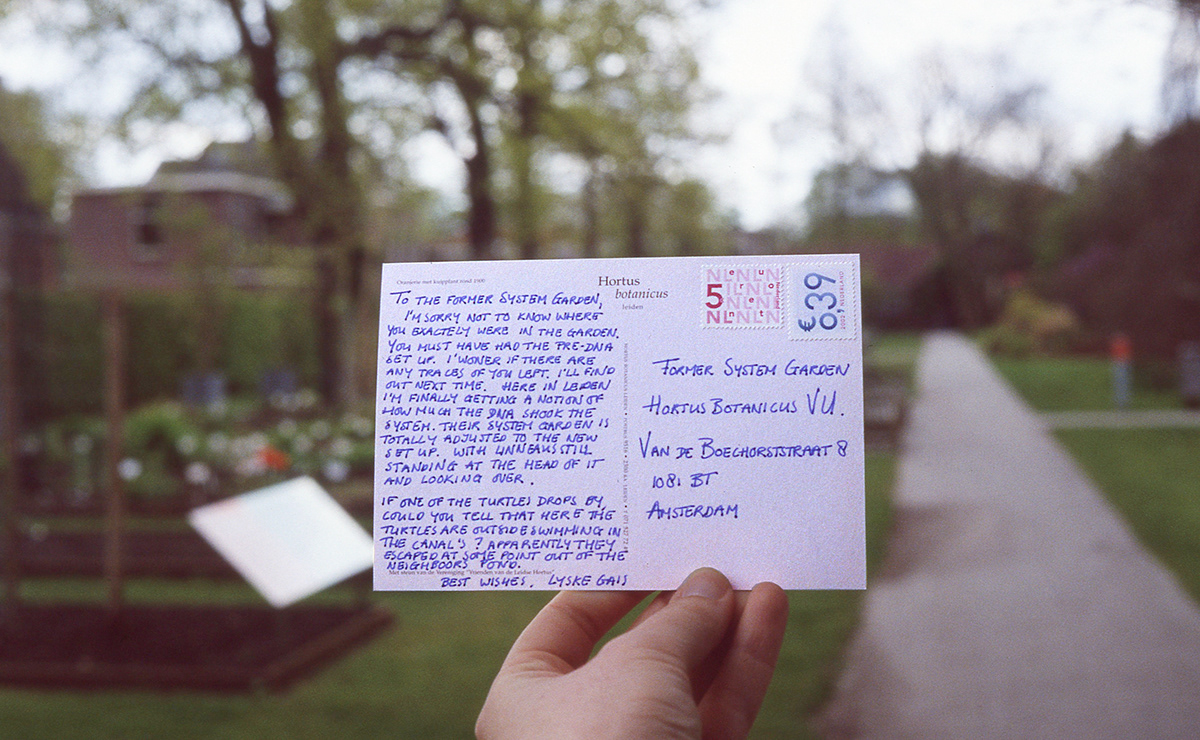
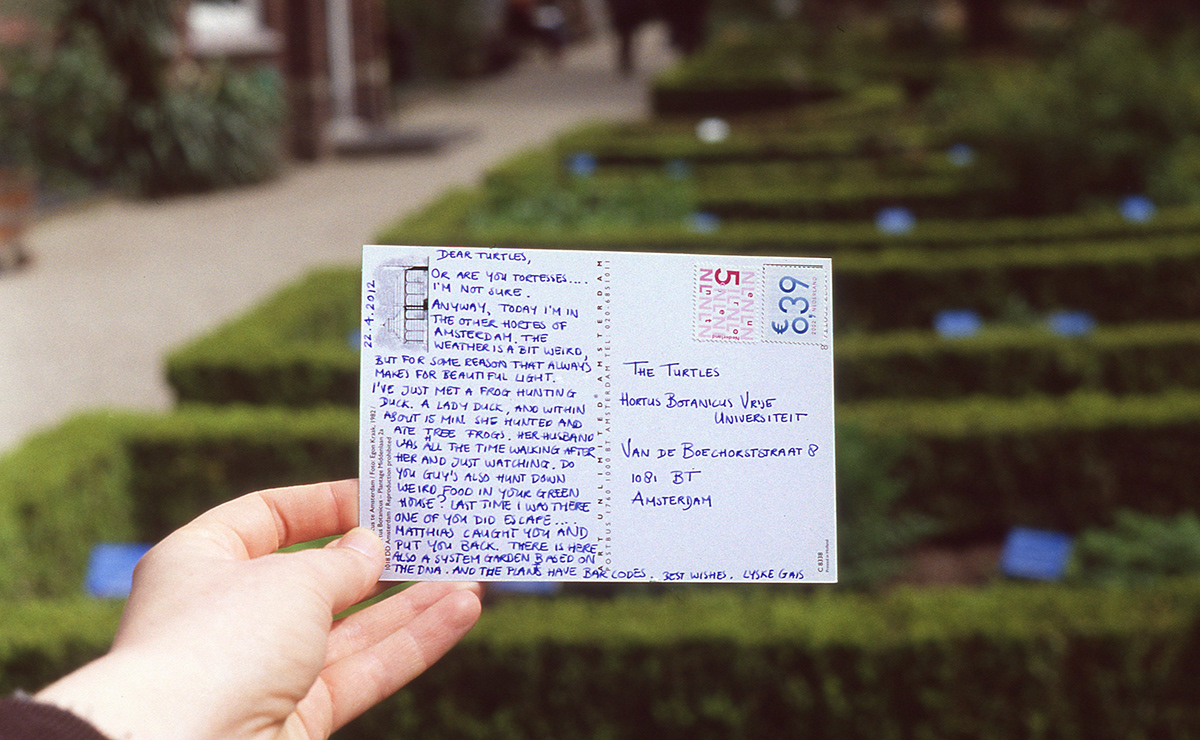
SOURCE OF THE WORK
Wikipedia:
The APG system (Angiosperm Phylogeny Group system) of plant classification is the first, now obsolete, version of a modern, mostly molecular-based, system of plant taxonomy that was published in 1998 by the Angiosperm Phylogeny Group. It was superseded in 2003 by a revision, the APG II system, and then in 2009 by a further revision, the APG III system. The original APG system is unusual in being based, not on total evidence, but on the cladistic analysis of the DNA sequences of three genes, two chloroplast genes and one gene coding for ribosomes. Although based on molecular evidence only, its constituent groups prove to be supported by other evidence as well, for example pollen morphology supports the split between the eudicots and the rest of the former dicotyledons.
The system is rather controversial in its decisions at the family level, splitting a number of long-established families and submerging a number of other families. It also is unusual in not using botanical namesabove the level of order, that is, an order is the highest rank that will have a formal botanical name in this system. Higher groups are defined only as clades, with names such as monocots, eudicots, rosids,asterids.


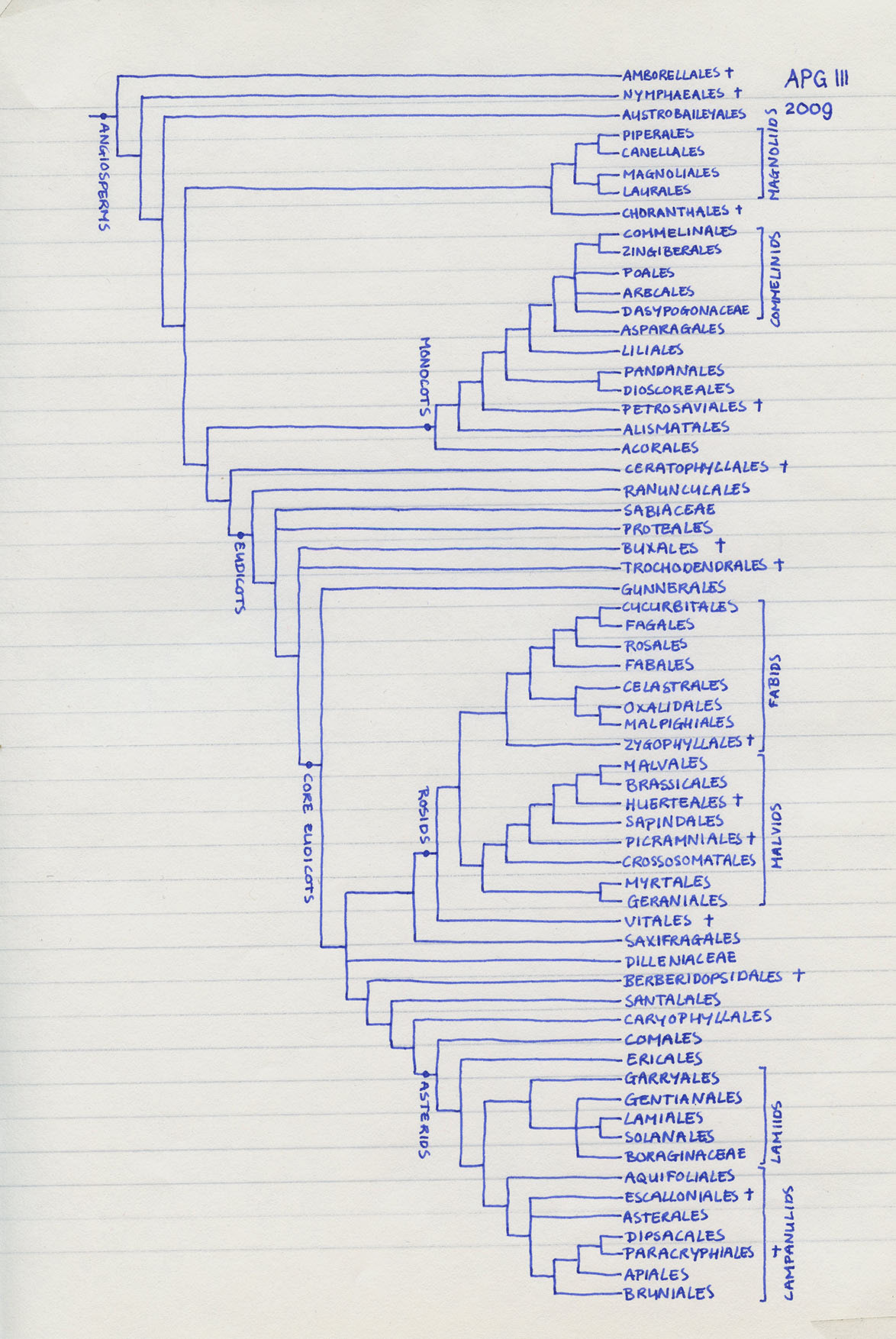
Lyske Gais gives special thanks to:
Freek T. Bakker, PhD, for a crash course in plant systematic and DNA bar coding.
James Mostert, for programming the audio files.
Renata Alvares, for the graphic design of the book.
Freek T. Bakker, PhD, for a crash course in plant systematic and DNA bar coding.
James Mostert, for programming the audio files.
Renata Alvares, for the graphic design of the book.



